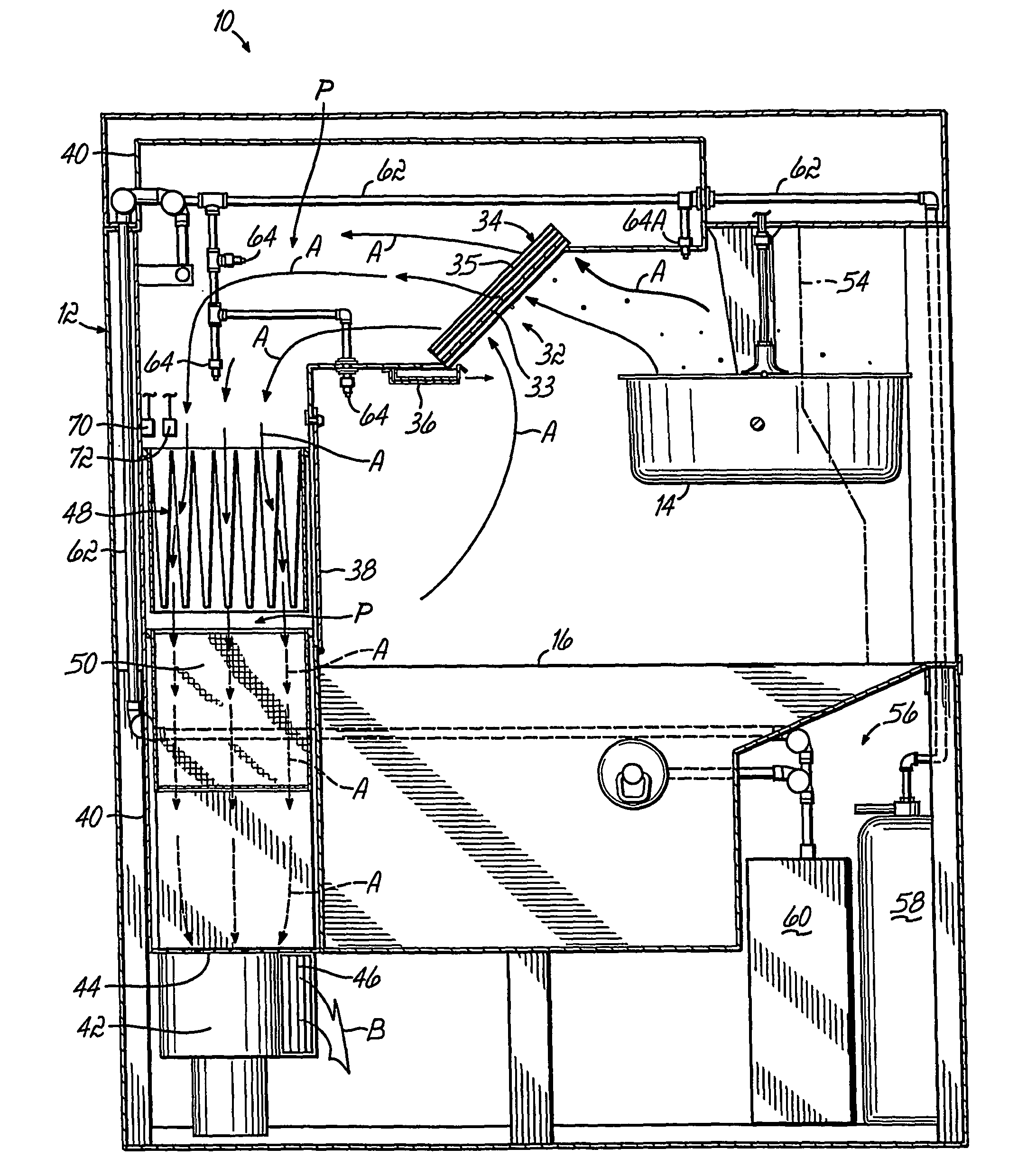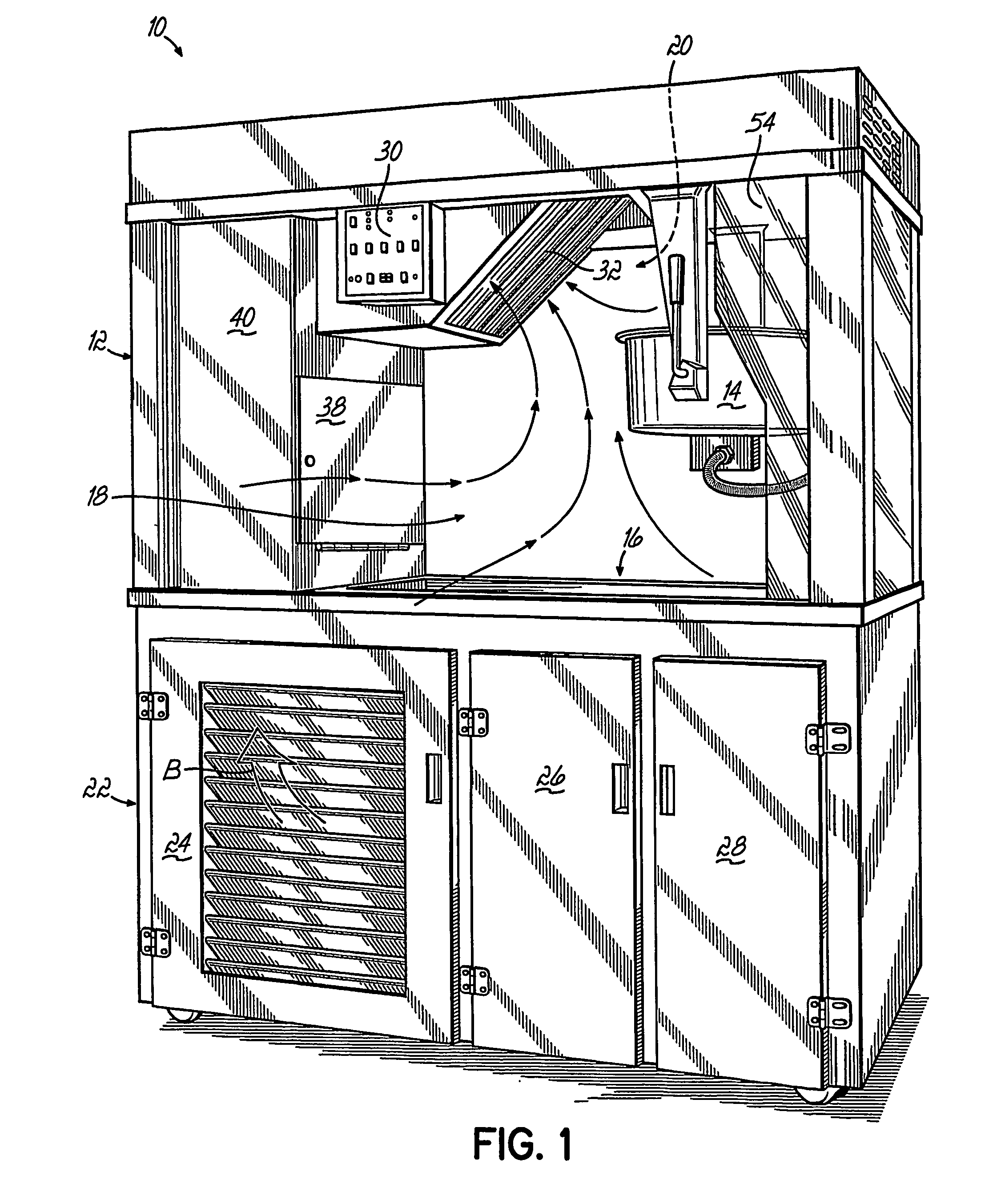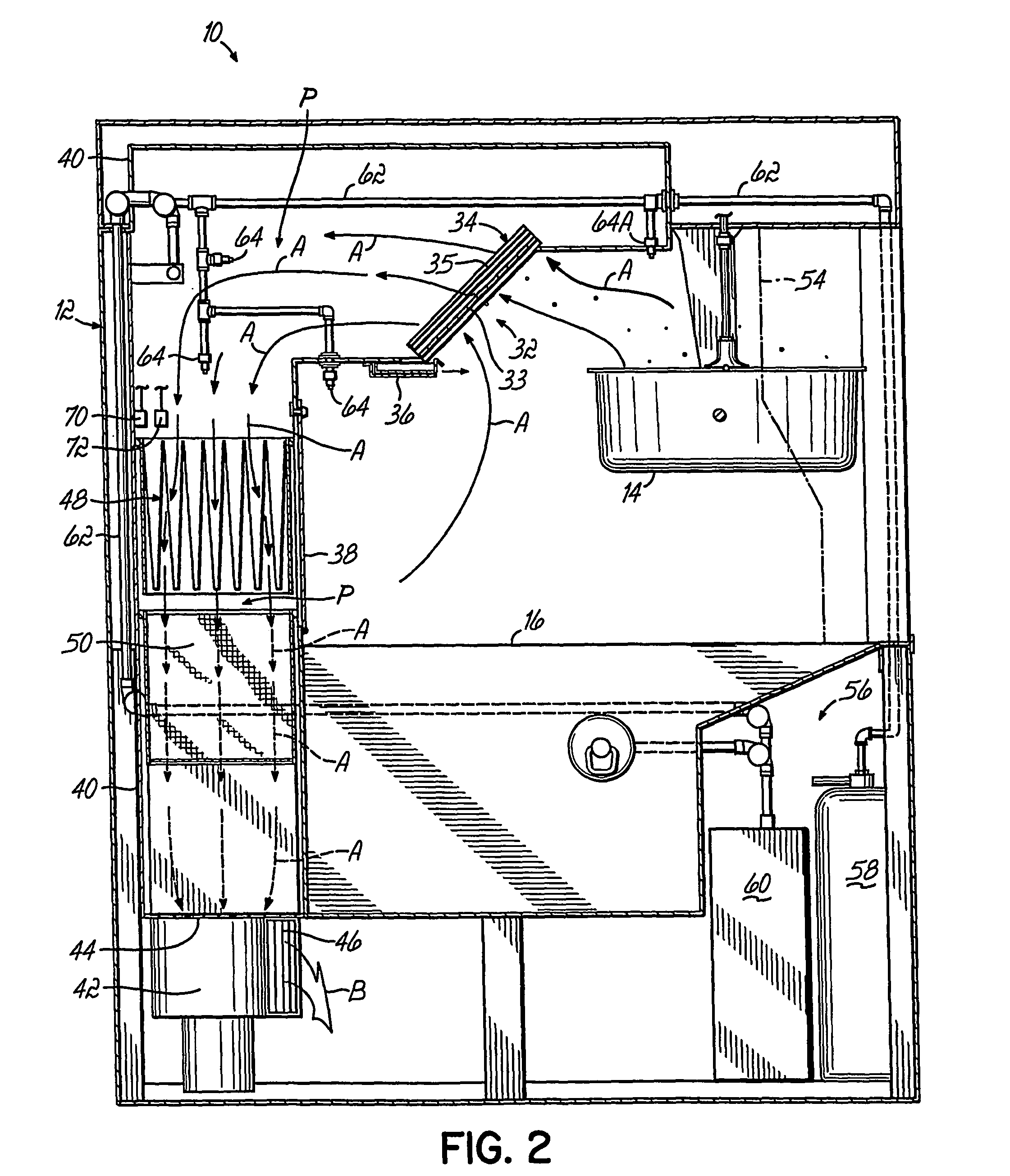Self contained popcorn popper
a self-contained, popcorn technology, applied in the field of popcorn poppers, can solve the problems of both “class 1, class 2” and “popcorn operation poses certain difficulties and expenses in new facilities, and achieve the effect of saving significant costs in original or remodelling construction
- Summary
- Abstract
- Description
- Claims
- Application Information
AI Technical Summary
Benefits of technology
Problems solved by technology
Method used
Image
Examples
Embodiment Construction
[0050]More particularly, a popper 10 (FIG. 1) comprises an upper cabinet 12 having a kettle 14 for popping and discharging popped popcorn into the popcorn bin 16. Front side 18 and rear side 20 of cabinet 12 are open. Thus, bin 16 is accessible by operators from both the front and rear sides. The open sides provide operator access preferably to both the bin and to the kettle.
[0051]Popper 10 includes the upper cabinet portion 12 and a lower cabinet portion 22 having a vented door 24 and storage doors 26, 28 behind which components of a fire suppression system can be disposed.
[0052]A control panel 30 (FIGS. 1 and 4) is disposed preferably on upper cabinet portion 12, or in any suitable location.
[0053]Kettle 14 is any suitable popcorn popping kettle capable of preferably popping large batches of popcorn (not shown) for discharge into bin 16. Kernel charges or loads of 28 to 66 ounces of unpopped popcorn (for example) are typical for placement into kettle 14 for popping. In this regard,...
PUM
 Login to View More
Login to View More Abstract
Description
Claims
Application Information
 Login to View More
Login to View More - R&D
- Intellectual Property
- Life Sciences
- Materials
- Tech Scout
- Unparalleled Data Quality
- Higher Quality Content
- 60% Fewer Hallucinations
Browse by: Latest US Patents, China's latest patents, Technical Efficacy Thesaurus, Application Domain, Technology Topic, Popular Technical Reports.
© 2025 PatSnap. All rights reserved.Legal|Privacy policy|Modern Slavery Act Transparency Statement|Sitemap|About US| Contact US: help@patsnap.com



